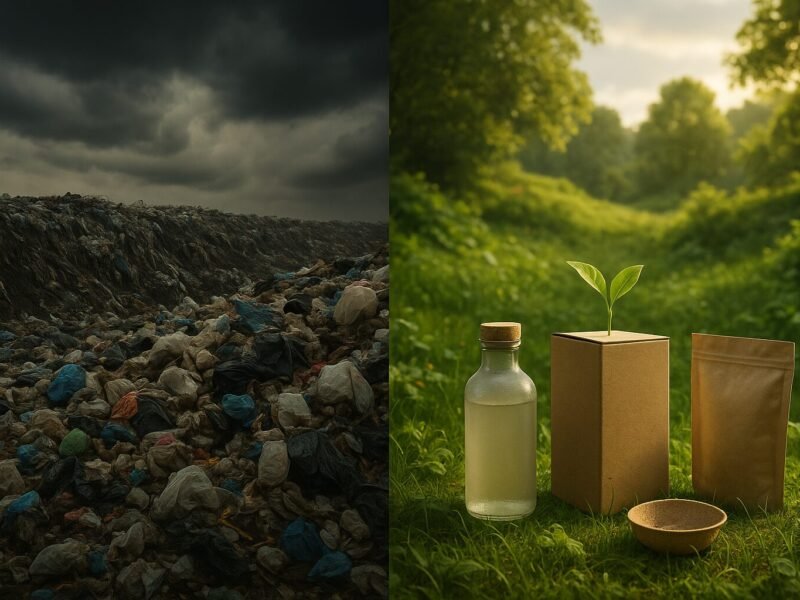
I see growing trash piles. Customers feel guilty. Brands lose trust. I can fix that with better packaging.
Sustainable packaging materials come from recycled, renewable, or easily recoverable sources, and they return to safe cycles through reuse, recycling, composting, or harmless decay.
Stay with me and I will break down each material choice, show how it works, and share clear tips you can act on right away.
Why does recycled content matter for packaging?
Trash keeps rising. Virgin resources run low. I must act fast.
Using recycled content cuts waste, needs less raw material, and saves energy, all while meeting the same protective role as new material.
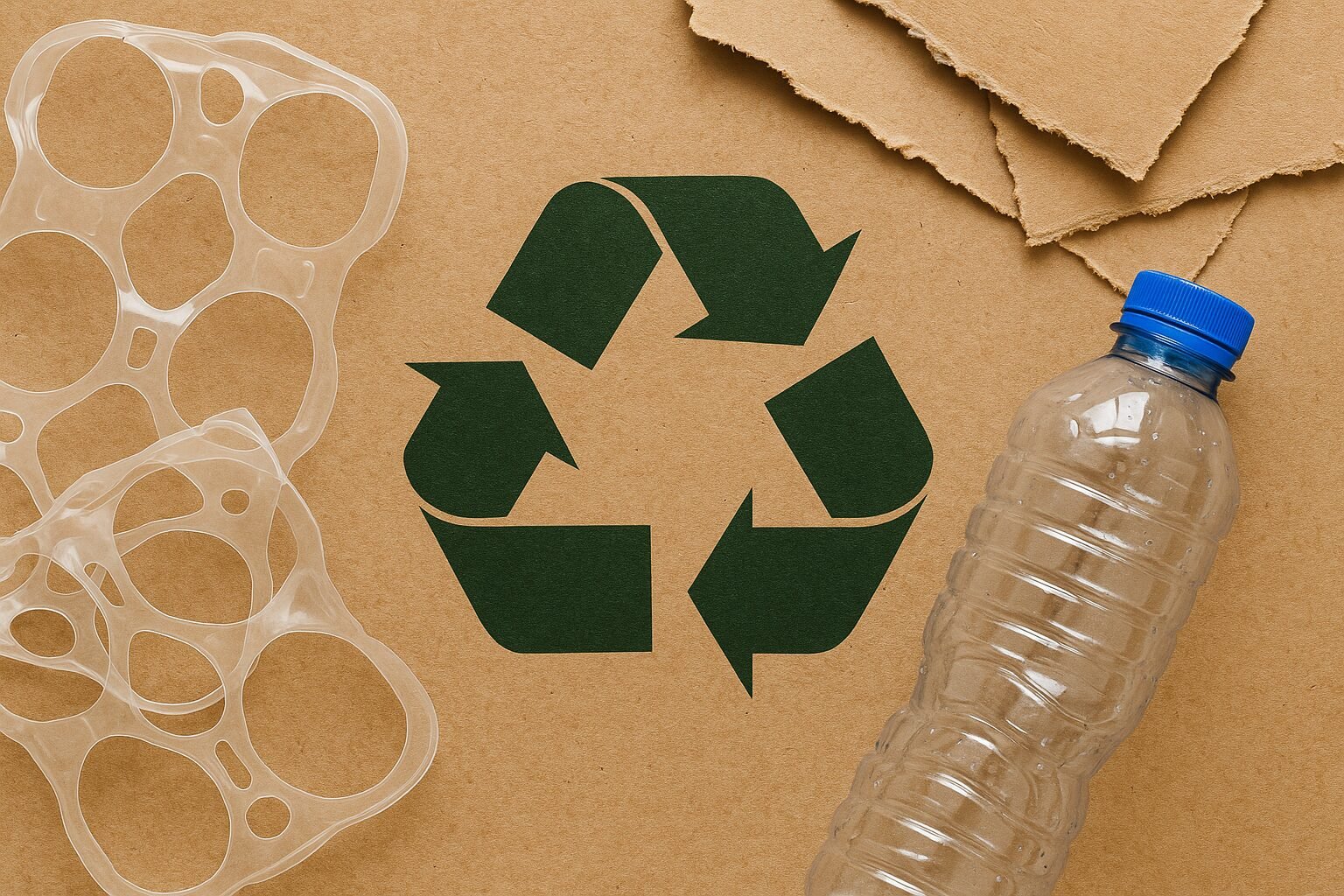
The basics of recycled content
Recycled content means fiber, plastic, glass, or metal that once served another life. A paper box can include up to 100 % post-consumer fiber1. A PET bottle can use flakes from old bottles. I specify that mix when I place an order with our mill partner.
Energy and emission savings
A simple table shows why I push recycled inputs.
| Material | Energy saved vs virgin | CO₂ saved vs virgin |
|---|---|---|
| Paper | up to 60 % | up to 40 % |
| Glass | 30 % | 20 % |
| Aluminum | 95 % | 90 % |
Closing the loop
Recycled content keeps fiber and resin in use. That loop delays landfill. It also lowers price swings that come from virgin pulp or oil markets. I noticed stability when I switched one client’s candle box line to 80 % recycled greyboard2. Their cost forecast got easier, and their buyers loved the “made from waste” story.
Limits and solutions
The loop is not perfect. Fiber shortens after five to seven cycles. Recycled plastic can lose strength. I blend a small share of virgin to keep performance. I also set up take-back programs that feed used boxes back to our board maker, so fresh feedstock never runs out.
Can biodegradable plastics really replace conventional plastics?
Plastic lasts for ages. Oceans fill up. Shoppers blame brands.
Biodegradable plastics break down by microbes into water, CO₂, and biomass, reducing long-term pollution when the right conditions exist.
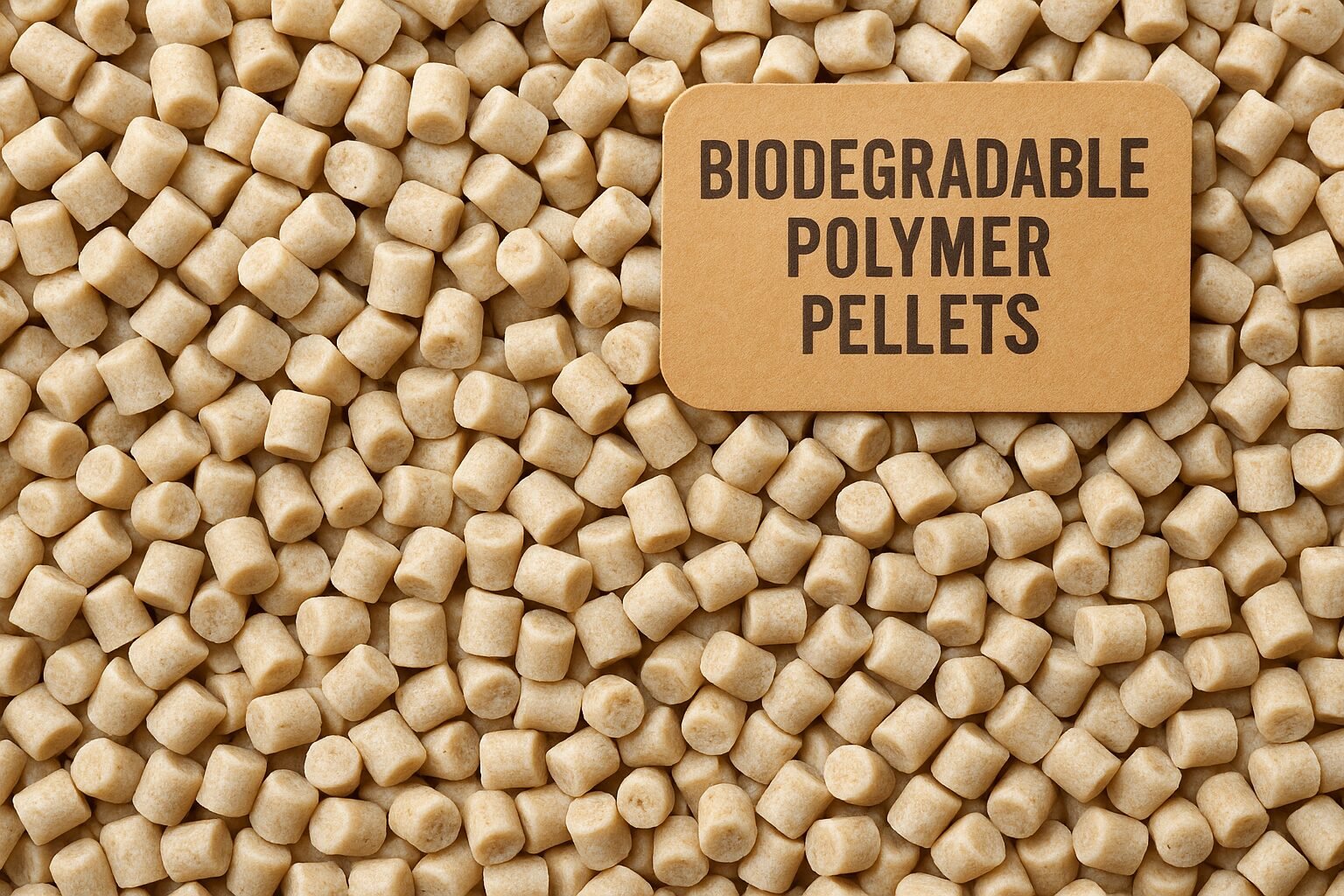
Understanding biodegradation speed
Not all “biodegradable” labels mean the same thing. Polybutylene adipate terephthalate (PBAT) may need 60 °C and high humidity. Polylactic acid (PLA) needs industrial compost. If I throw them in cold soil, they sit for years. Therefore I guide clients to match material with the waste stream they can access.
Performance compared to PET
PLA can look like PET. It seals at lower heat, saving energy on the line. Yet it softens at 55 °C, so hot-fill drinks are risky. I solved this for a tea brand by switching only the outer shrink sleeve to PLA while keeping the bottle in rPET. They still cut 30 % fossil resin.
End-of-life challenges
Municipal systems often miss the right composting step. Mixed streams lower recycling purity. Education signs and QR codes help. I add graphics that say “Industrial compost only, do not recycle.” This clear call lowers confusion.
My outlook
Biodegradable plastics are a tool, not a cure-all. I use them where food waste is high and collection exists, such as stadium cups or coffee capsules. For long-life goods, I stick to recyclable mono-materials3.
What makes compostable packaging different from biodegradable options?
Confusion rules. Labels mix up terms. Customers feel tricked.
Compostable packaging must break down within a set time and leave no toxins, creating nutrient-rich soil under industrial or home compost settings stated by standards.

Certification matters
ASTM D6400 and EN 13432 give clear pass/fail tests. I never claim “compostable” unless the lab report is in hand. That keeps my clients safe from green-washing fines.
Home vs industrial
Home compost runs cooler. Materials like PBAT+PLA blends fail here. I look for PHA or certified home-compost films for direct-to-consumer mailers. That switch saved a beauty brand from angry unboxing videos where fans showed bags that refused to break down.
Impact on soil
Good compost adds carbon, nitrogen, and no heavy metals. I commission soil tests after pilot runs. Results from a sugarcane bagasse tray trial showed nitrogen up by 4 %, no lead or cadmium. Farms welcomed the output.
System thinking
Compostable makes most sense where organic waste is high. Think meal kit liners, produce bags, or coffee pod shells. When organics and package can go together, sorting is easy, and landfill methane falls.
Are plant-based materials a scalable choice?
Forests shrink. Oil prices swing. I search for renewables.
Plant-based materials stem from crops like corn, bamboo, or sugarcane, replacing fossil feedstock with annually grown resources and often fitting existing recycling or compost loops.
Feedstock comparison
| Source | Annual yield per hectare | Typical use case |
|---|---|---|
| Corn starch | 8 t | PLA resin, foam sheets |
| Bamboo | 35 t | Molded fiber, paper |
| Sugarcane | 70 t (bagasse) | Pulp trays, film resin |
High yield keeps land use low. Bagasse is a waste from sugar mills, so I love its low footprint.
Processing energy
Plant fibers often need less heat than petro plastics. A molded pulp tray cures at 180 °C, while PET thermoforms at 240 °C. That saves energy bills in my factory.
Farming impacts
Monoculture can hurt soil. I source FSC bamboo from mixed forests and non-GMO corn. Supply chain audits keep us honest.
Scale and price
Corn and sugarcane volumes keep growing. Global PLA capacity now tops 400 000 t/year. Prices still run 10–20 % above PET, but tax credits and fossil price spikes narrow the gap. My order book shows clients accept the surcharge when the story aligns with their brand.
Why is glass still a sustainable packaging hero?
People think glass is heavy, fragile, old-fashioned. Shipping costs rise.
Glass can be recycled endlessly without quality loss, offers a premium look, and shields products from oxygen and chemicals, yielding long shelf life with a proven closed-loop model.
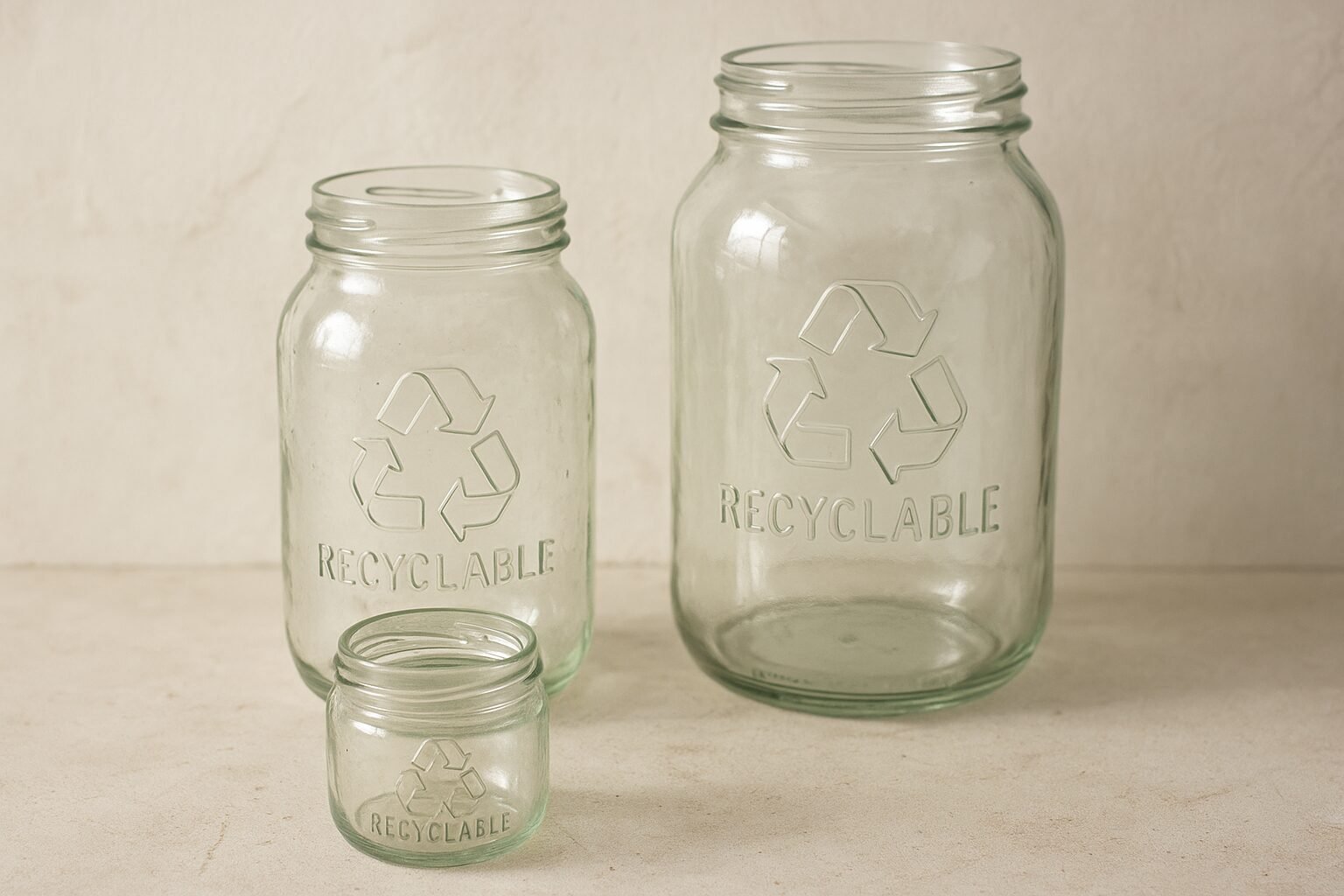
Infinite recyclability
Unlike polymer chains, silica networks stay intact. A bottle can come back as another bottle with near 100 % yield. In Europe, collection rates reach 76 %4. I push clients toward clear glass, as mixed colors lower loop efficiency.
Weight reduction
Light-weighting cuts emissions. A 500 ml beer bottle weighed 300 g in 1980; now many are 180 g. My cosmetic jar supplier shaved 15 % off glass mass by redesigning the shoulder, keeping the luxury feel.
Refill models
I run pilot refill stations for a local spice brand. Consumers bring the jar back, we wash and refill. Breakage was only 3 %, far below fear. Sales rose 20 % due to the “bring-back bonus.”
Transport balance
Yes, glass is heavy. But short supply chains and rail freight offset that. I map routes to place decoration plants close to filling sites. Carbon math often beats multilayer plastic when reuse hits four cycles.
Is aluminum the ultimate circular metal?
Cans stack up. Mining scars mountains. Yet I still back aluminum.
Aluminum is light, strong, blocks light and gas, and can be recycled with 95 % energy savings, making it a near-perfect loop when capture rates are high.
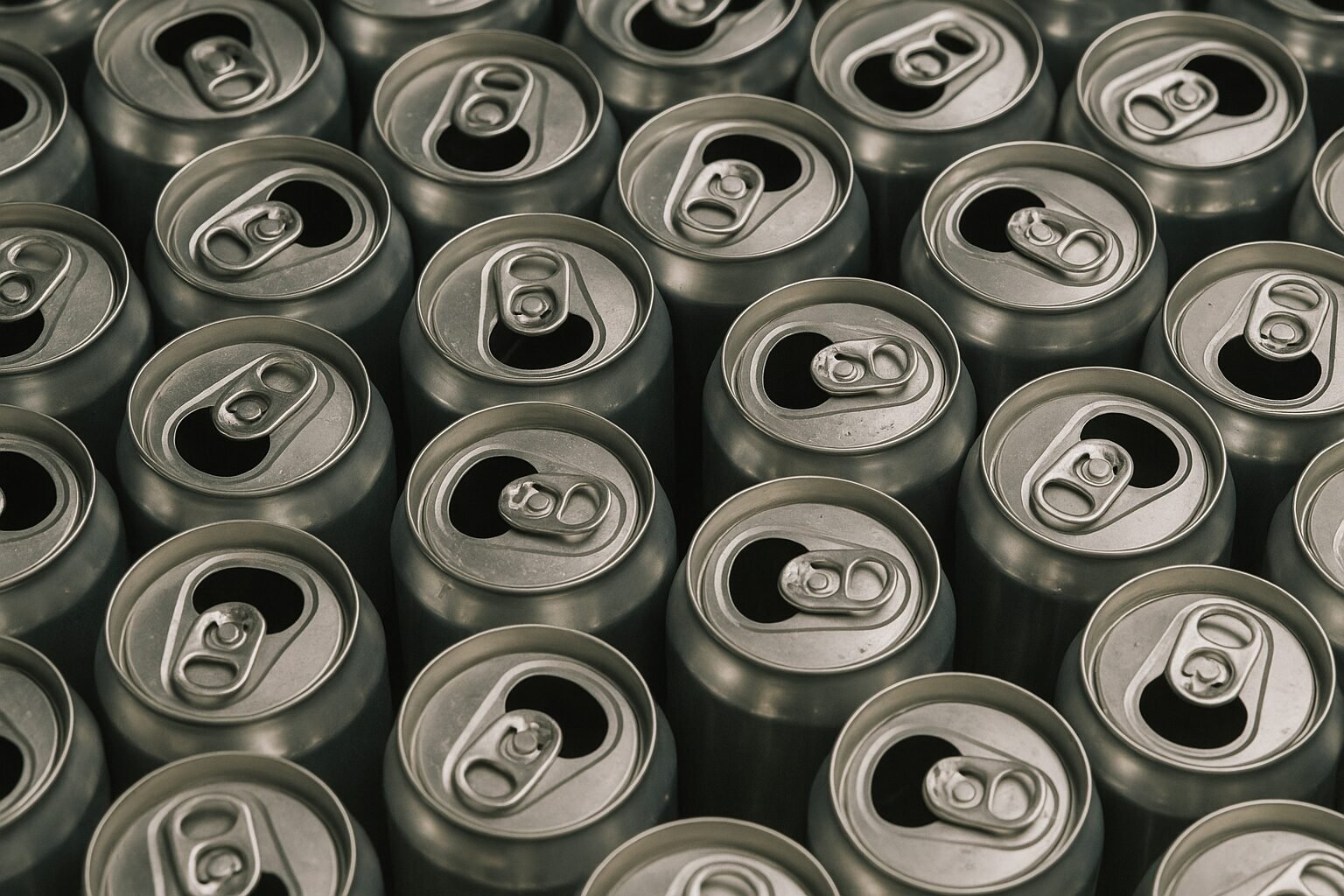
Barrier performance
Aluminum keeps beer fresh for months. It prevents vitamin loss in sports drinks. No other mono-material matches its barrier at such low thickness.
Recycling value
Scrap value drives collection. A bale of used cans brings in real cash. That funds curbside bins without subsidy. In the U.S., 50 % of cans already come from recycled metal. I aim for 70 %.
Design tricks
I now use coil-coated aluminum for capsule lids. We print with water-based ink and skip plastic laminate. This mono-material lid peels clean and drops straight in the metal stream.
Life-cycle math
An LCA I ran for a wine client showed aluminum bottles beat glass after two recycles due to lower shipping weight. The client added “Recycle me again and again” on the back panel, pushing consumer action.
How can material innovation reshape sustainability?
Old choices limit progress. New chemistry opens doors.
Material scientists now create resins, coatings, and inks that match performance yet break down or recycle more easily, letting brands keep function and cut harm.
Soluble barrier coatings
Water-soluble, plant-derived coatings can replace PE in paper cups. The cup stays heat-resistant but pulps in standard mills. I joined a pilot with such cups at a music festival. Recoveries hit 92 %.
Enzyme-triggered polymers
Some new PET analogs carry an enzyme inside the chain. When heated in a special bath, the chain snaps to monomers in hours. That yields pure feedstock without downcycling.
Digital watermark sorting
Invisible codes printed on the pack surface tell optical sorters the exact polymer mix. That allows near-perfect separation of food-grade PP from others. I expect roll-out in Europe within two years.
My role as buyer
I test each idea in small runs. If drop tests fail, I tweak wall thickness. I also balance risk by keeping a safe traditional option ready. Innovation needs a runway, but when it sticks, clients gain a first-mover badge.
Do packaging redesigns cut environmental impact?
Material is only part. Shape, size, layers matter too.
Redesigning packaging to use less material or remove mixed layers can slice footprint by double-digits without changing the product inside.

Right-sizing
I ran a 3D scan of a skincare set. The old box held 40 % air. After shrinking, carton use dropped 28 %. Shipping pallets now carry 20 % more units, cutting freight emissions.
Mono-material switch
A snack pouch once mixed PET, aluminum, and PE. We moved to a high-barrier mono-PP film. It still blocks oxygen but now recycles through the #5 stream. Shelf life stayed at nine months.
Structural strength
Finite element analysis shows where I can thin walls. I shaved 10 % off a folding carton without more dents. That saved one metric ton of board per million packs.
Emotional design
I keep brand feel. Elegant embossing or soft-touch varnish keeps the unboxing joy even when board weight goes down. Customers rarely notice, but the planet does.
Why does lifecycle assessment guide better choices?
Many claims sound green. Only data proves it.
Lifecycle assessment (LCA) tallies every input and output from cradle to grave, showing real environmental load and preventing “solution shifting” that hides problems.
Scope and data
An LCA covers raw extraction, transport, processing, use, and end-of-life. I use openLCA software with ecoinvent data. If data gaps appear, I run sensitivity checks rather than guess.
Comparing apples to apples
One liter of juice in a PET bottle vs an aseptic carton means different shelf life. I normalize results per liter-day. That fair view led one client to keep the carton, even though recycling is less common, because food waste fell.
Communicating results
I craft a one-page scorecard. Simple icons show CO₂, water, and land use. Buyers grasp the story fast, and their marketing teams turn it into social media posts.
Continuous updates
Inputs change. Grid electricity may get cleaner. I rerun key SKUs yearly. That keeps our roadmap fresh and spots wins early.
How does consumer education close the loop?
Even the best pack fails if tossed wrong. Confusion still blocks recycling bins.
Clear on-pack labels, digital tools, and return schemes tell users how to dispose of each material, raising recovery rates and making sustainable choices work in real life.

Label clarity
I follow the How2Recycle scheme in North America and OPRL in the UK. Simple icons beat long text. QR links give local rules based on postcode.
Incentives
Deposit return grows. I add a scannable code that credits loyalty points when a shopper brings back a pouch. Redemption hit 45 % in three months for one pet food brand.
Social proof
Videos showing my factory turning old boxes into new ones build trust. Customers see the loop and feel part of it. Engagement increases, and contamination drops.
Training staff
Retail clerks often answer waste questions. I supply them with quick cards. When staff speaks clearly, the message sticks.
Conclusion
Sustainable packaging blends smart materials, lean design, honest data, and clear guidance, turning waste into value and letting brands protect both products and planet.
Learn the definition of post-consumer fiber and why it's a key indicator of sustainable packaging materials. ↩
Understand the properties and common applications of recycled greyboard, a versatile and sturdy eco-friendly packaging material. ↩
Understand why using a single material for packaging drastically improves its recyclability and value after use. ↩
See the official data from the European Container Glass Federation (FEVE) on glass recycling performance across Europe. ↩






